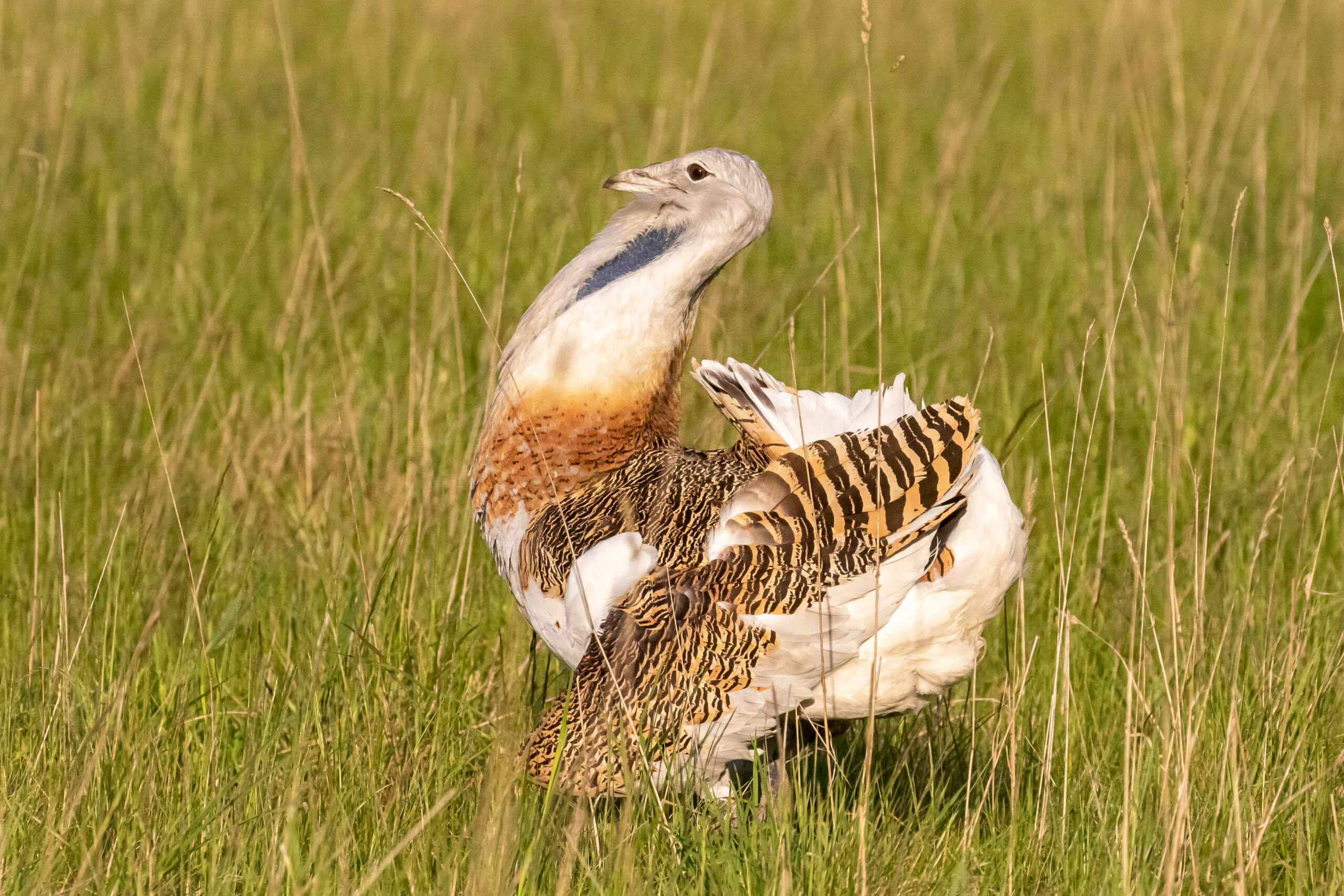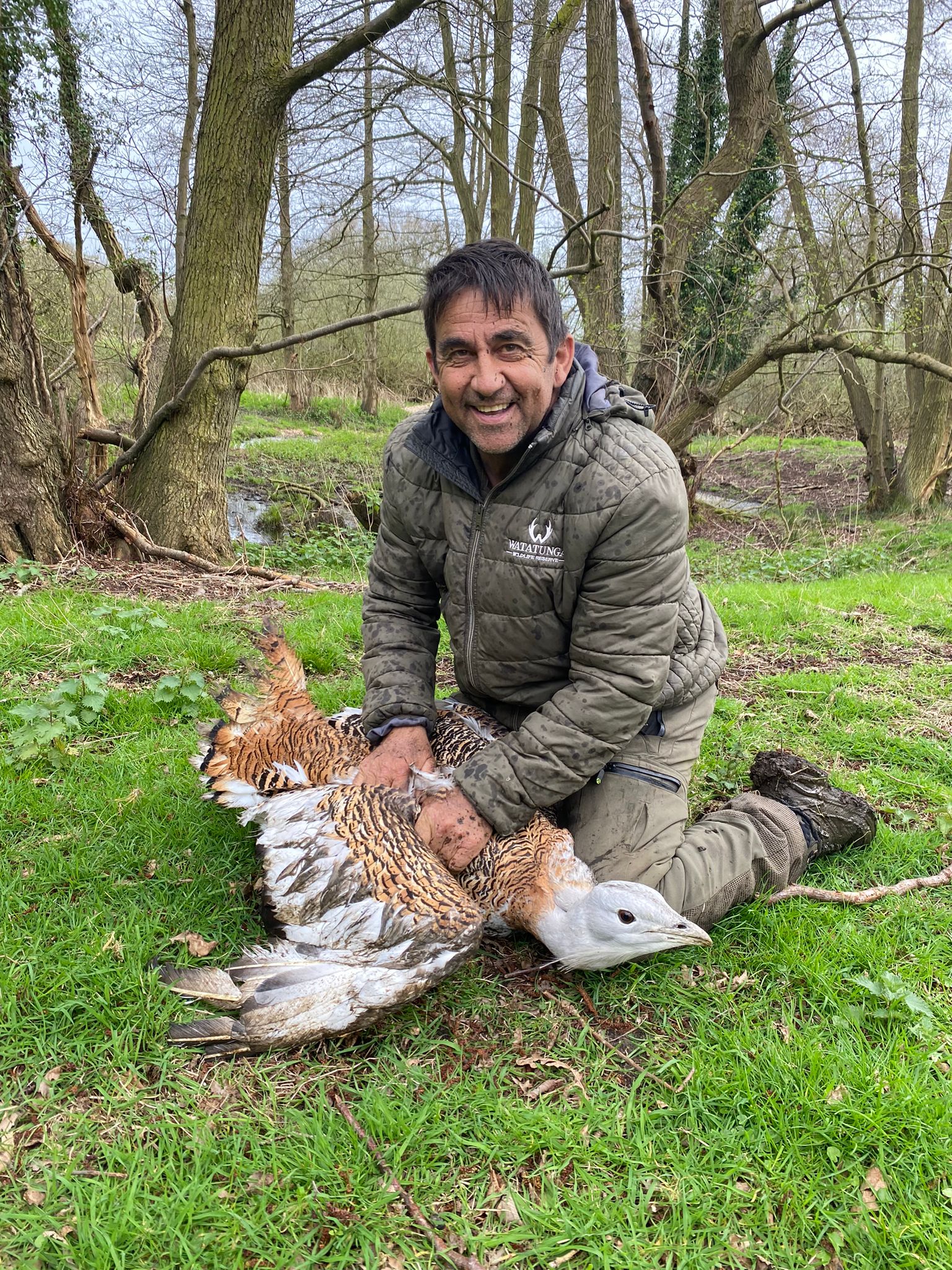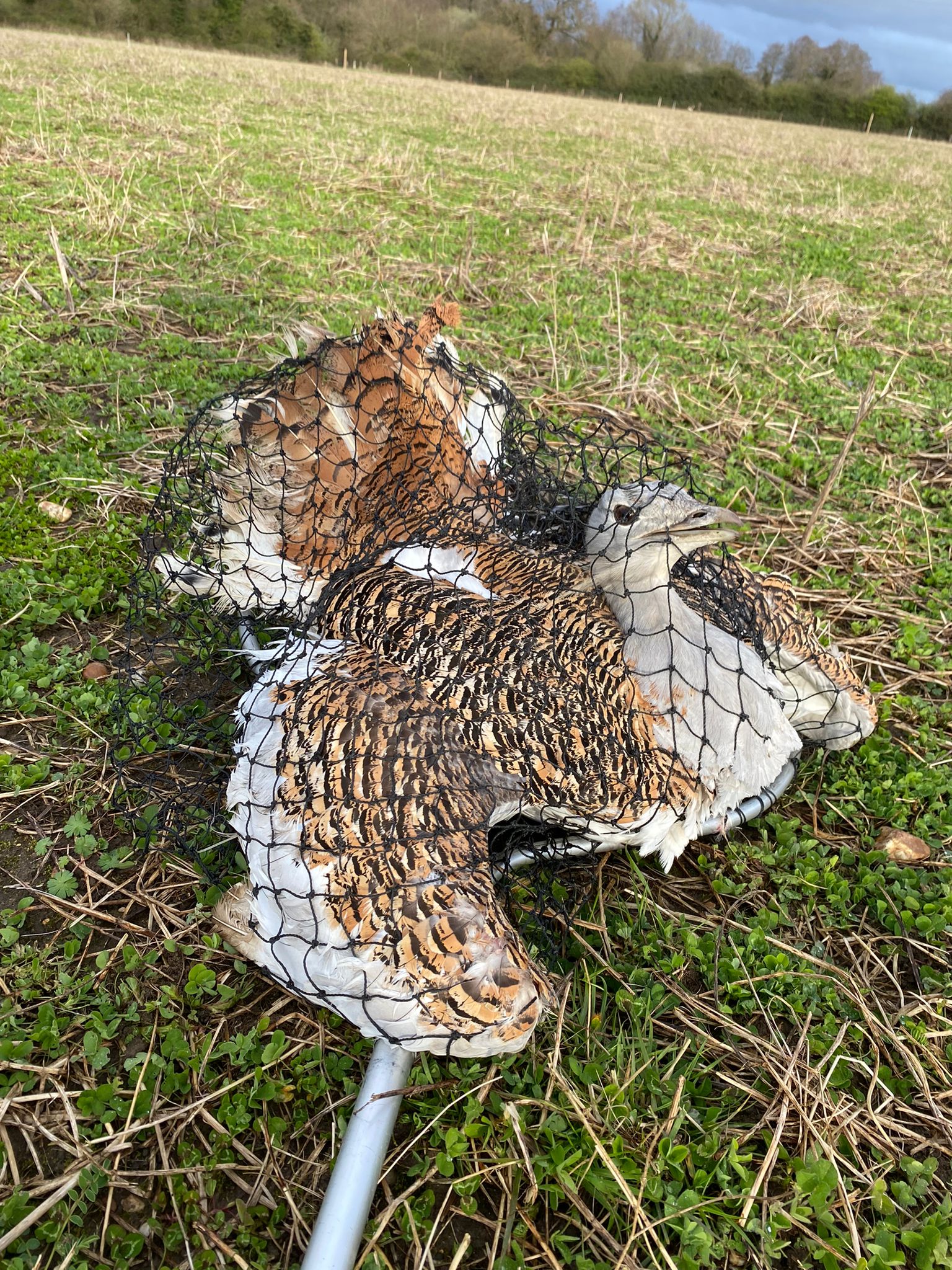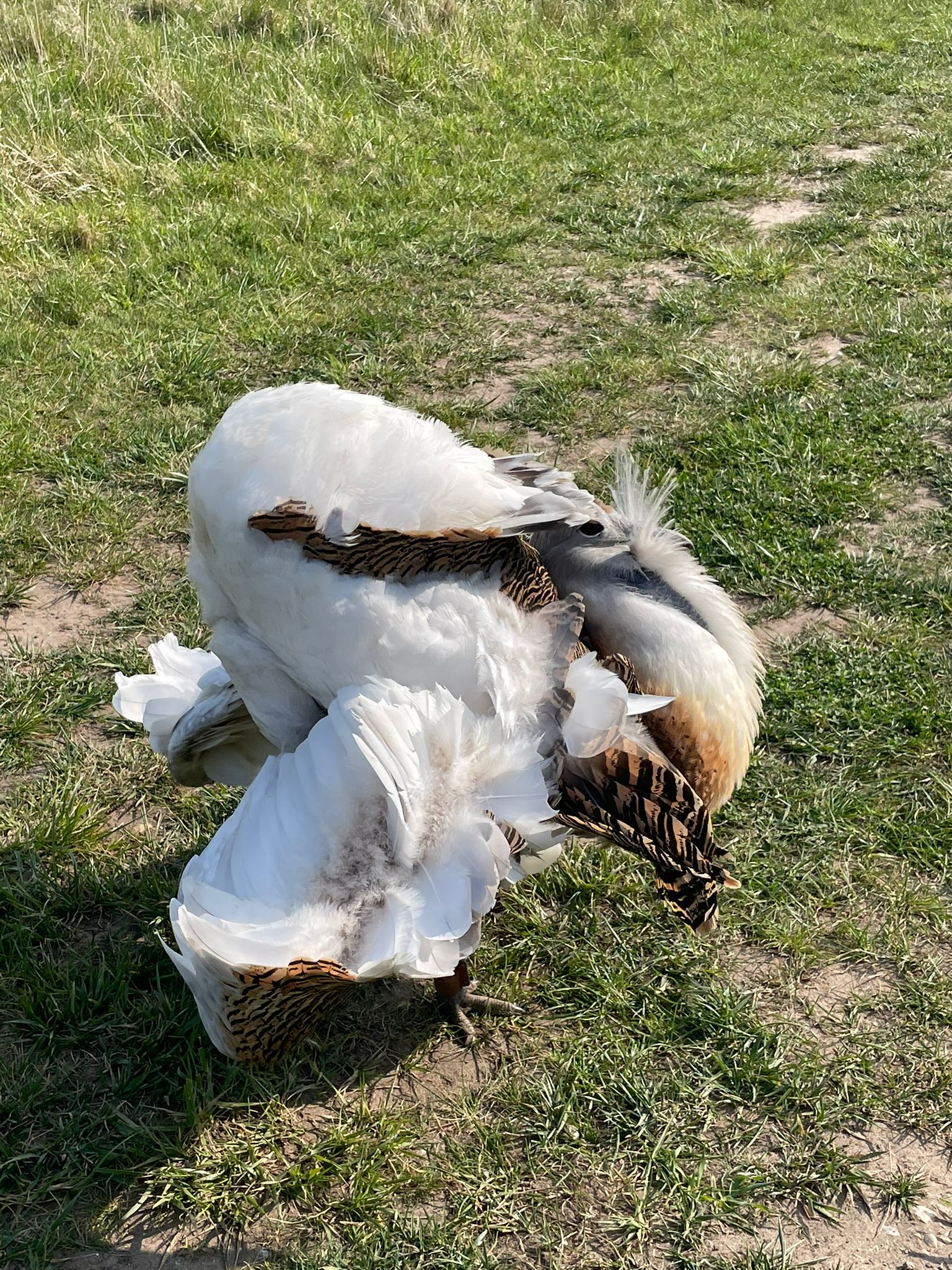Grumpy old bustards!




Wing clipping doesn’t hurt at all, it’s no more than a hair cut and it is all over in less than a minute. We have huge nets that we use to catch our bustard in. We then have to crouch over them, stretch out one wing at a time (this is a two person job as they are very strong and heavy birds). Adult males can weigh up to 18kg! We then cut the flight feathers with secateurs as they are far too strong for normal scissors, lift up the next and release them.
Our female bustard is just approaching a mature enough age for breeding and so we are hopeful that she might lay this year. Watch this space for updates!